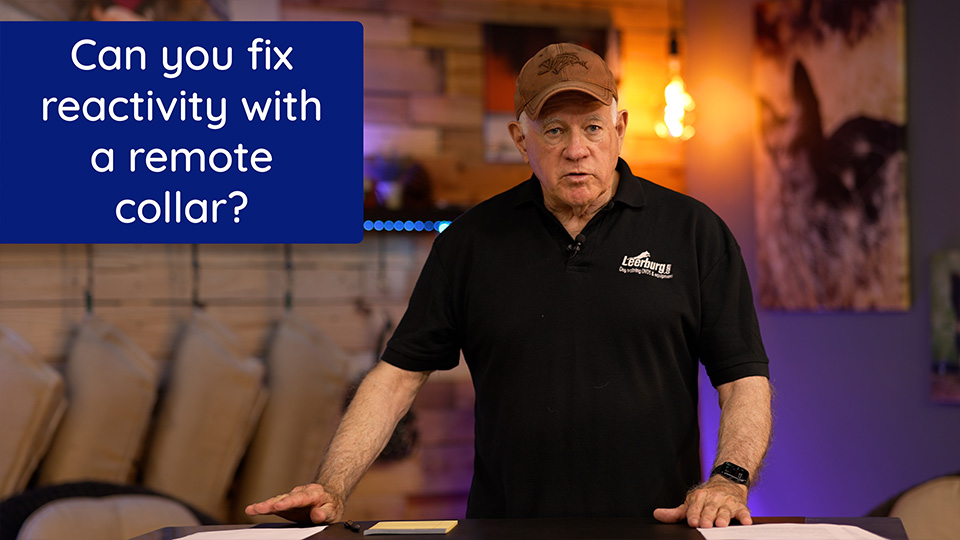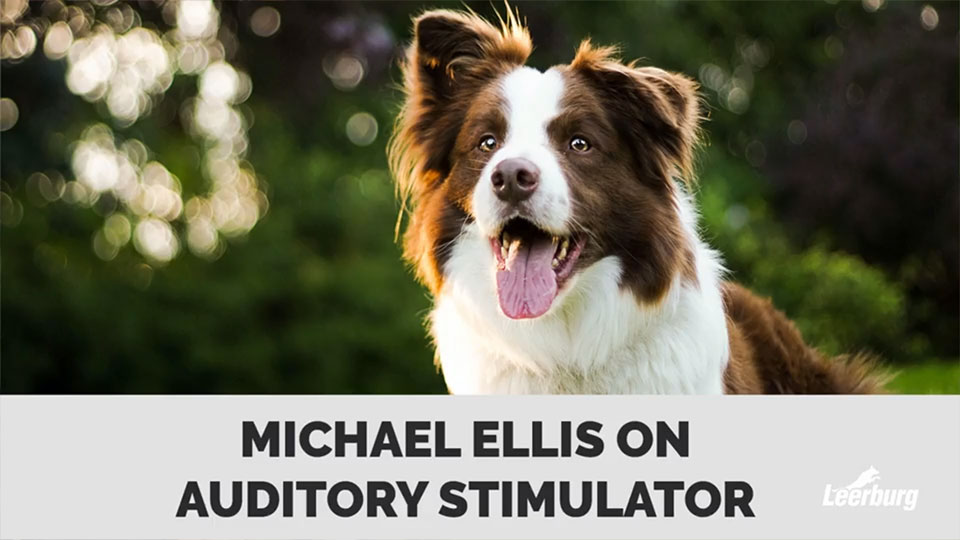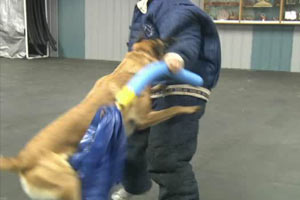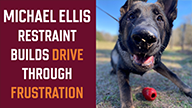Related Videos
Loading
Michael Ellis on Escape Avoidance Training
Uploaded on June 7, 2010 •
7 min
A short lecture on Escape Avoidance training as it relates to remote collars vs prong or choke collar.
Comments
horshu
March 20, 2017
Mike thank you for sharing your VERY thorough and thoughtful speaking ability. For me it's very clear, and easy to understand.
masterscathy
December 1, 2012
OMG! Thanks for this. I am not against the use of the electric collar, and as a last resort, turned to it to after weeks (21/2 months) of doing all the "right things" to engage a very high strung, reactive GSD. She cannot maintain focus (on anything except a running dog) for more than a split second. A leaf, a noise, motion... I finally decided her behavior is a detriment to her own health. She will not even eat when she is feeling anxious. I'm not talking a meal, but days. I was considering meds, but that just doesn't sit well with me, and she is finally eating enough to maintain decent weight and growth. The collar was an immediate (15 minute session) success. If this dog is so afraid of life she had better focus on me, and trust me to deal with. I had her eye contact (and stillness) within a few minutes. She definately has some issues, and she is one dog I hesitated to use the collar on, but had immediate positive reults. Still scouring your site, though...have not figured out her reward. She has extremely strong eye (heading) on other dogs. I work Border Collies and Heelers, so I recognize this. Wants to control. Her owner said she was dog aggressive at about 10-12 weeks and she was separated from all but one dog that would as he said "put her down." I have found that she is not aggressive at all, but her herding drive is very strong, with no control. So I think I will start there with the collar, if that will be her reward. I am not sure what else to try as a training reward. Toys... she acts like she is doing you a favor.
ziska
December 31, 1969
Summary of the Lecture Escape- Avoidance Training:
The Escape Part (of Escape- Avoidance Training) consist of:
-Leash-Pressure
The dog learns to survive pressure and how to turn it of.
How to turn it of: That the Pressure stops with a certain behavior.
later (after the dog has learnd to turn the pressure of with Lesh-Pressure training)
-E-collar
Dog turns the electric shock of, by doing a certain behavior.
Best after and in combination with Leash-pressure work to minimize superstitious behavior
Avoidance:
Means avoid a correction by doing or not doing something.
-Dog DOES SOMETHING unwanted -> Leash/ e-collar or other correction follows
-> The dog avoids correction by NOT DOING the thing.
-Dog DOES NOT REACT on command -> correction
next time DOg reacts to command to avoid correction.
Timeline: (When to use pressure in Training)
1. Showing/ learning behavior
2. Show that its positive do do that behavior (because of reward)
3. Show in general how to turn pressure of with Leashpressure training NOT in combination with Obediance
4. Apply pressure with obediance training
The more motivated /engaged the dog the less pressure needs to be used.
(My Fazit: Motivation and Engagement work is the key to less correction)
Stress Levels induced from different training tools: (in order from higest to lowest Stress inducing)
Prong Collar (highest Stress)
negativ Punishment (means withholding of rewards)
E-collar (lowest Stress) [my comment -if correct applied]
Further information:
Leash Pressure: Focused Heeling with Michael Ellis (Leerburg DVD)
General: Pamela J. Reid: Excel-Erated Learning
http://leerburg.com/999.htm
Missing:
- Age of the Dog for when to start Leash-Pressure training
But hopefully this is explaned in more detail in the Leerburg DVD
I hope you enjoyed my summary,
I enjoyed the video.
The Escape Part (of Escape- Avoidance Training) consist of:
-Leash-Pressure
The dog learns to survive pressure and how to turn it of.
How to turn it of: That the Pressure stops with a certain behavior.
later (after the dog has learnd to turn the pressure of with Lesh-Pressure training)
-E-collar
Dog turns the electric shock of, by doing a certain behavior.
Best after and in combination with Leash-pressure work to minimize superstitious behavior
Avoidance:
Means avoid a correction by doing or not doing something.
-Dog DOES SOMETHING unwanted -> Leash/ e-collar or other correction follows
-> The dog avoids correction by NOT DOING the thing.
-Dog DOES NOT REACT on command -> correction
next time DOg reacts to command to avoid correction.
Timeline: (When to use pressure in Training)
1. Showing/ learning behavior
2. Show that its positive do do that behavior (because of reward)
3. Show in general how to turn pressure of with Leashpressure training NOT in combination with Obediance
4. Apply pressure with obediance training
The more motivated /engaged the dog the less pressure needs to be used.
(My Fazit: Motivation and Engagement work is the key to less correction)
Stress Levels induced from different training tools: (in order from higest to lowest Stress inducing)
Prong Collar (highest Stress)
negativ Punishment (means withholding of rewards)
E-collar (lowest Stress) [my comment -if correct applied]
Further information:
Leash Pressure: Focused Heeling with Michael Ellis (Leerburg DVD)
General: Pamela J. Reid: Excel-Erated Learning
http://leerburg.com/999.htm
Missing:
- Age of the Dog for when to start Leash-Pressure training
But hopefully this is explaned in more detail in the Leerburg DVD
I hope you enjoyed my summary,
I enjoyed the video.












